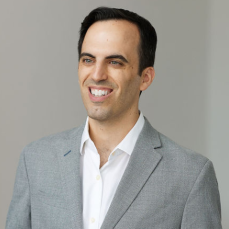Expanding into the US remains a key ambition for many European growth businesses. With a large, dynamic market, the US offers significant opportunities – but also unique challenges. Drawing on the experiences of ECI portfolio companies, ECI’s North American Growth Specialist, Brett Pentz, shares his secrets to building a successful US growth strategy in 2025.
1. Consider acquisition versus organic carefully
The first question when considering your US route to market is whether to enter organically or via acquisition. Each path offers distinct advantages depending on your goals, capabilities, and timeline.
For example, leader in digital-first, tech-enabled marketing, Croud, initially pursued an organic strategy, relocating key business development and client leadership talent. This allowed them to build a US client base from scratch, leveraging existing UK systems and technology to deliver high-quality service. Over nearly a decade, this approach led to consistent growth, with a mix of UK clients with US presence and additional new US-headquartered logos. As the business matured, Croud shifted to an acquisitive strategy to deepen service offerings and expand into new talent and technology hubs. The acquisition of Vert Digital (now Croud Atlanta) in 2024 marked the beginning of this next phase.
Commify, by contrast, recognised early on that scale was essential to succeed in the US business messaging market. In 2024 they acquired Text Request, adding 10% to global revenues and significantly expanding their US footprint. The acquisition provided not only scale but also a strong operational base to drive future US growth.
2. Move people over – but do it with purpose
Relocating talent from the UK to the US can be a powerful way to embed company culture and accelerate learning. But it’s important to do so with a clear strategy. When MiQ was looking to expand in the US, Founder Gurman Hundal and his family moved over for four years, and that meant he could hire and train people the MiQ way and get a better first-hand understanding of the workings of the US market. Working in the weeds in the US, he saw, for example, the difference in US and UK sales cycles. Whereas US buyers might have more process such as RFPs, pitch decks, the people they wanted to meet etc, they were also more likely to commit and sign up for longer terms than their UK equivalents.
Croud executed a similar model, promoting senior business development manager Kris Tait to VP of Business Development and tasking him with launching the US office in New York. His UK experience helped establish best practices, while his time in the US enabled him to adapt to local client expectations. Kris was the first of many to make this move, and over time, a hybrid culture emerged—blending Croud’s UK strengths with US market nuances.
3. Consider your base carefully
There are some key determining factors when thinking about your ideal base in the US, such as where your ideal customer profiles are most concentrated, whether the location is within a tax-friendly environment, or if there is a strong local talent pool for recruitment? Choosing the right base of operations in the US can have a significant impact on long-term success. For Croud, New York was the right first base due to the prospective customer targets identified. Over time, they complemented this with acquisitions in lower-cost regions like Atlanta, enabling them to expand capabilities and access new talent pools while maintaining cultural alignment.
It’s also important to keep your end-customer front of mind. When Moneypenny opened its US HQ in Atlanta, it was identified as a popular area for its existing and potential client base in legal, finance and accounting, and healthcare. Other considerations included ease of access to the UK, with Atlanta a key international flight hub. Lastly, having opened in Charleston and then experienced significant hurricane-related disruptions, they were keen to ensure they had a HQ with minimal disruptions to their critical communication services. It is important to consider all possible criteria to prioritise the right launchpad in the US.
4. Team culture
Building a strong team in the US is about more than just hiring—it’s about creating a culture that blends local expectations with your company’s core values. When Peoplesafe acquired OK Alone in North America, CEO Naz Dossa noted that virtual meetings alone aren’t enough to foster strong relationships. Face-to-face interactions were key to building trust and smoothing leadership transitions, especially when managing remote teams. Across all these examples, it’s clear that success in the US depends on building a team that’s not only capable, but culturally attuned and connected.
5. Commit for the long term
Perhaps the most important secret is this: success in the US takes time, investment, and commitment. It’s not a market where you can dip your toe in and expect immediate results.
All the companies we support with successful US growth strategies, demonstrate the value of long-term thinking. Whether through sustained organic growth, strategic acquisitions, or a combination of both, they’ve shown that with the right strategy and team, European businesses can thrive in the US.



